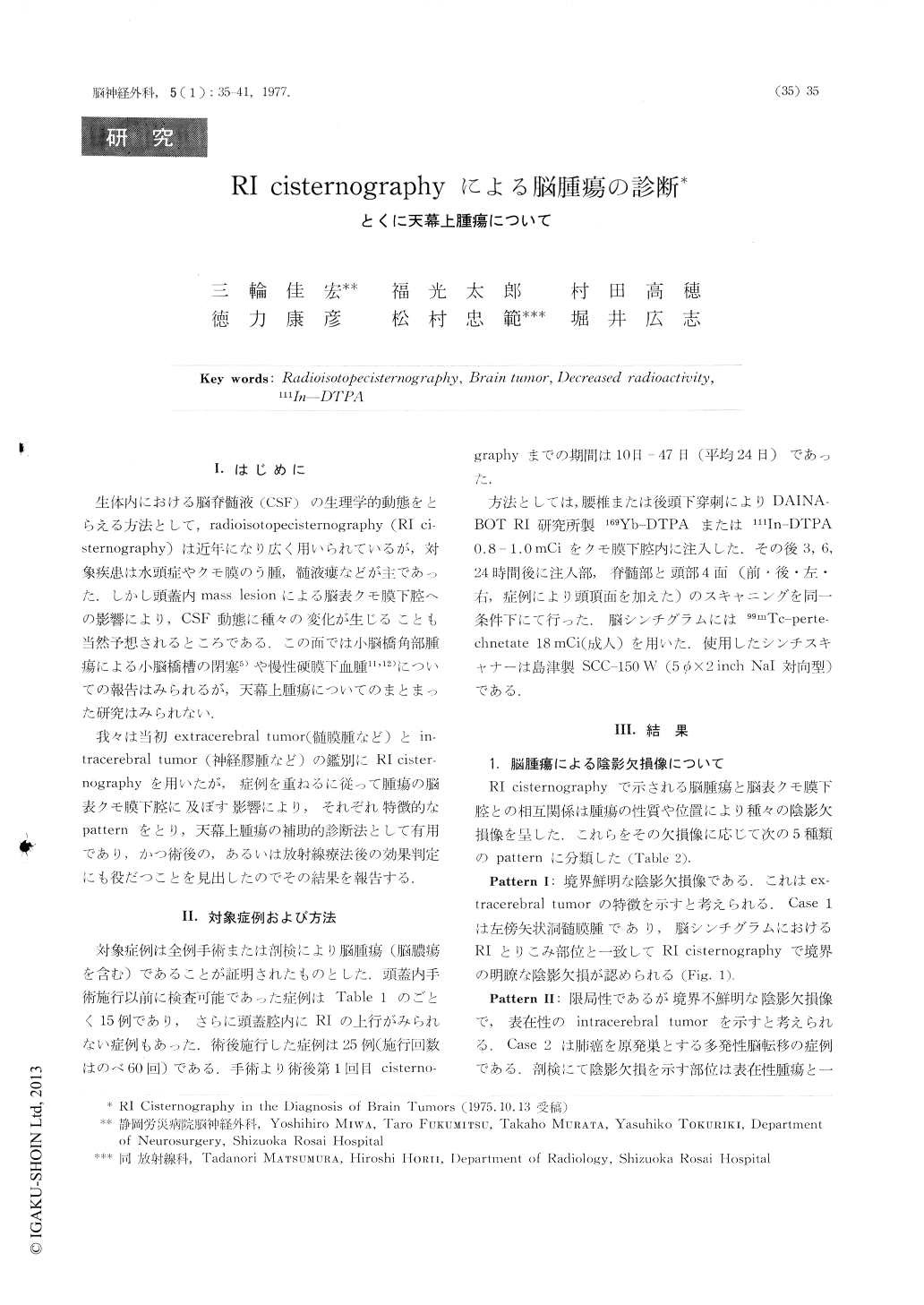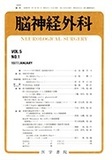Japanese
English
- 有料閲覧
- Abstract 文献概要
- 1ページ目 Look Inside
Ⅰ.はじめに
生体内における脳脊髄液(CSF)の生理学的動態をとらえる方法として,radioisotopecisternography(RI cisternography)は近年になり広く用いられているが,対象疾患は水頭症やクモ膜のう腫,髄液瘻などが主であった.しかし頭蓋内mass lesionによる脳表クモ膜下腔への影響により,CSF動態に種々の変化が生じることも当然予想されるところである.この面では小脳橋角部腫瘍による小脳橋槽の閉塞5)や慢性硬膜下血腫11,12)についての報告はみられるが,天幕上腫瘍についてのまとまった研究はみられない.
我々は当初extracerebral tumor(髄膜腫など)とintracerebral tumor(神経膠腫など)の鑑別にRI cisternographyを用いたが,症例を重ねるに従って腫瘍の脳表クモ膜下腔に及ぼす影響により,それぞれ特徴的なpatternをとり,天幕上腫瘍の補助的診断法として有用であり,かつ術後の,あるいは放射線療法後の効果判定にも役だつことを見出したのでその結果を報告する.
Fifteen cases of brain tumors of supratentorial location were studied by RI cisternography. Cisternographical patterns of decreased or absent radioactivity were classified into five groups as follows:
Pattern Ⅰ: Sharply circumscribed and localized decrease in radioactivity; Pattern Ⅱ: Ill-defined and focal decrease in radioactivity; Pattern Ⅲ: Areal decrease in radioactivity involving one whole or two lobes; Pattern Ⅳ: Hemispherical decrease in radioactivity and Pattern Ⅴ: Total decrease in radioactivity in the head.

Copyright © 1977, Igaku-Shoin Ltd. All rights reserved.


